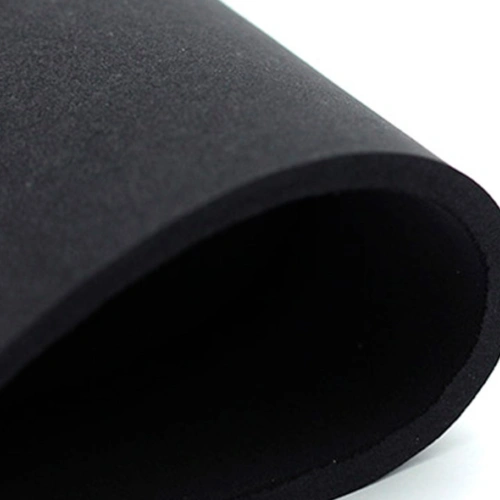| October 31, 2025
In modern engineering, technological advances do not stop, and there are increasingly more materials that help and drive industrial sectors. Crosslink is one that currently stands out.
Within the aerospace industry, this material has become a key component thanks to its ability to resist, protect, and maintain the performance of structures subjected to the most demanding conditions that a human or a machine can face.
This product, with its closed-cell composition and lightness, has gained relevance over other polymers. In a sector where every gram matters and precision is a rule, this material not only meets but exceeds expectations.
It allows optimizing weight, increasing the durability of components, and reducing maintenance costs, three aspects that together can define the viability of a project in this industry.
Resistance and weight: the constant search for balance
When talking about light and resistant materials in the aerospace industry, it is important to take into account resistance. There is no margin for error, and every part of the design must respond in the best way.
Crosslink offers an advantage that few materials can match, combining structural rigidity with reduced density, allowing the manufacture of protective components without adding unnecessary weight. The result is tangible.
In internal or external parts, this material absorbs impacts, resists friction, and maintains its integrity in the face of continuous vibrations. Its performance is not limited to theory; it has proven to work with the same effectiveness in laboratory tests as in real operations, where pressure and temperature conditions test any design.
Crosslink: Thermal and chemical stability for the aerospace industry
One of the reasons why crosslink has earned a special place in the aerospace industry is its stability.
It does not easily deform in the heat, nor does the cold affect its resistance and structure. Internally, it remains intact even when the temperature changes drastically, as occurs in high-altitude flights or during ground maintenance operations.
Additionally, its chemical composition makes it resistant to aging and degradation from prolonged exposure. In environments where the air may be laden with oils, fuels, or metallic particles, this polymer maintains its performance without releasing residues or losing its properties.
Acoustic and vibrational control: beyond comfort
The interior of an aircraft or spacecraft must not only be safe, but it also must provide a stable environment for its occupants and equipment.
Crosslink has proven to be an effective solution for noise and vibration control, two factors that can affect both the comfort and performance of instruments in the aerospace industry.
Its closed-cell structure acts as a natural acoustic barrier that absorbs and cushions sound while dissipating vibrations before they can spread.
Thanks to this, the lifespan of internal components is extended, and wear caused by continuous exposure to noise and mechanical movements is reduced. It is a silent way to protect operational efficiency without altering the original design.
Reliability, precision, and advancement: the foundation of the aerospace industry
When analyzing what makes the advancement of the aerospace industry possible, it is inevitable to recognize the role of materials like crosslink. Its contribution goes beyond physical protection; it represents a way of understanding engineering from efficiency and safety.
Its stability under pressure and its predictable behavior over time make it an essential element for projects where accuracy is the measure of everything. Therefore, every application in which it participates reinforces confidence in its performance.
It is a material that unites science, design, practical experience, and continues to evolve as technological demands grow. In each new mission or project, crosslink demonstrates that the future of engineering is also built with materials that know how to adapt to the limits of the possible.
At Worldwide Foam, we understand that performance begins with the right material choice. Our catalog includes closed-cell polyethylene foam, designed to offer resistance, lightness, and precision in sectors where there is no room for error.
If you want to learn more about its applications or need personalized advice, contact us. Our team can help you find the exact solution for your project and accompany you at every stage of the process.
Worldwide Foam

We are leaders in the supply of closed cell polyethylene foam in Mexico. We support various industries by offering a wide range of products and complementary services.










